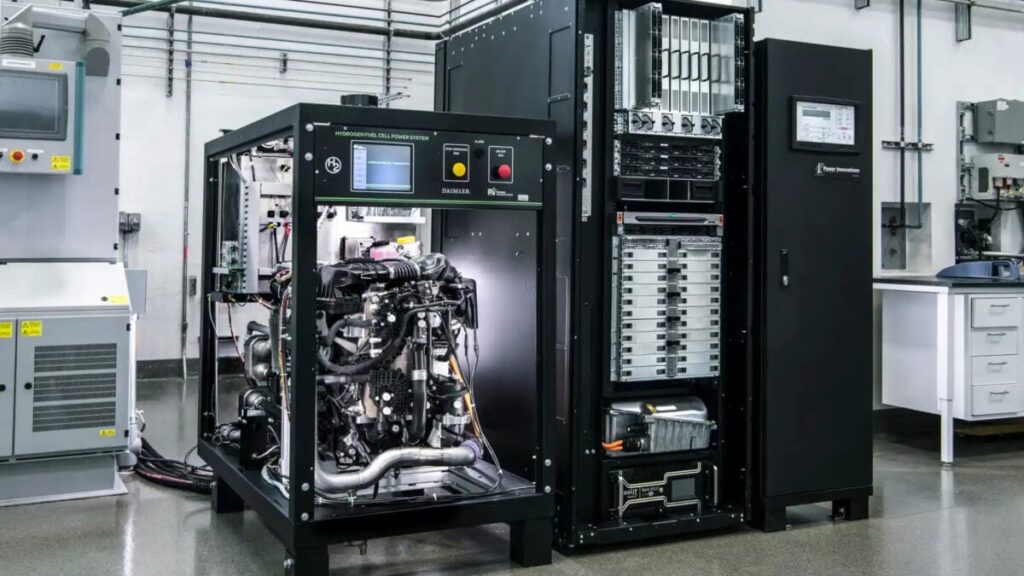As an alternative to fossil fuel combustion, hydrogen fuel cells hold tremendous promise. But they’re also notoriously difficult and expensive to manage, which largely explains why we don’t see them everywhere (or anywhere, for that matter, except for a few initiatives that are “exploring” their efficiency). But that may soon change.
In a Nature Materials paper published August 8, researchers announced the development of a new type of solid-oxide fuel cell (SOFC) that addresses an underlying problem for these contraptions: temperature. Hydrogen fuel cells, a type of SOFC, directly convert hydrogen gas into energy and water. This process, while very efficient and long-lasting, demands ridiculously high operating temperatures ranging from 1,292 to 1,472 degrees Fahrenheit (700 to 800 degrees Celsius).
The new cell, however, works at just 572 degrees F (300 degrees C), less than half of what was previously required. “Bringing the working temperature down to 300°C would slash material costs and open the door to consumer-level systems,” said Yoshihiro Yamazaki, study senior author and a materials engineer at Kyushu University in Japan, in a statement.
Specifically, the team focused on re-engineering the electrolyte, a ceramic layer composed of different atomic structures arranged in a crystal lattice. In hydrogen fuel cells, positively charged hydrogen ions, or protons, travel across these crystalline pathways to convert hydrogen gas into energy and water. Normally, the fuel cell must operate under extremely high temperatures to work, which the researchers tried to bypass using chemical dopants—substances added to manipulate a material’s physical properties—in combination with an appropriate oxide crystal.
“But this also comes with a challenge,” Yamazaki explained. “Adding chemical dopants can increase the number of mobile protons passing through an electrolyte, but it usually clogs the crystal lattice, slowing the protons down.”
After testing various candidates, the team locked in on two compounds, barium stannate and barium titanate. When doped with scandium at a temperature of 572 degrees F, the two materials displayed efficiency levels at par with existing SOFCs at much higher temperatures.
Surprisingly, the scandium atoms latched onto oxygen atoms to form a “wide and softly vibrating [molecular] highway” that enabled the protons to travel with an “unusually low migration barrier,” Yamazaki explained. The two compounds used for this electrolyte are also softer than what’s conventionally used to build such cells, he added, which was likely the reason the compounds easily absorbed the scandium dopant.
“Our work transforms a long-standing scientific paradox into a practical solution, bringing affordable hydrogen power closer to everyday life,” Yamazaki said.
Compared to room temperatures, 572 degrees F is still very high. Nevertheless, this reduction is still significant and paints a promising future for bringing down operating temperatures even further—and also operating costs—for the widespread, practical implementation of SOFCs.

